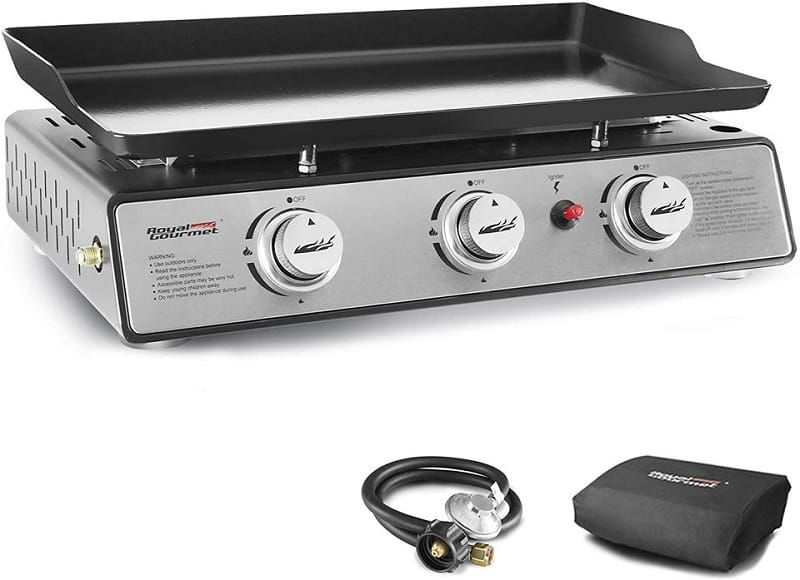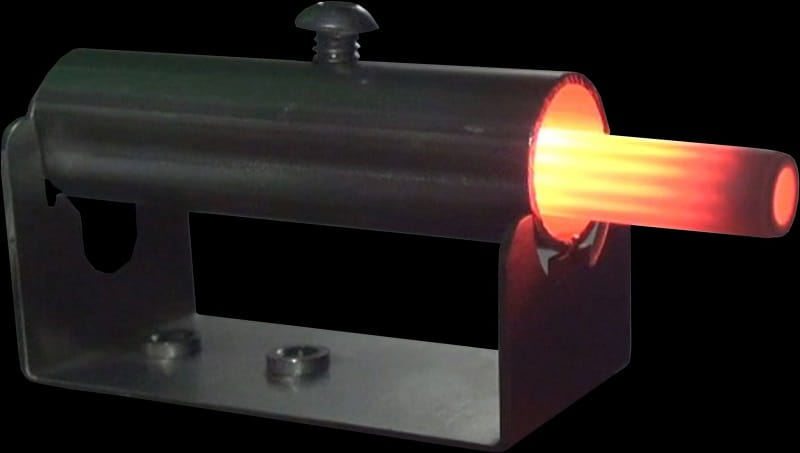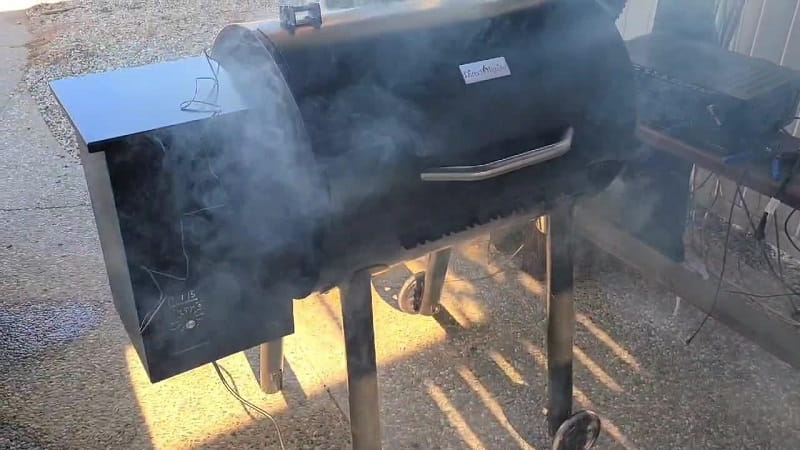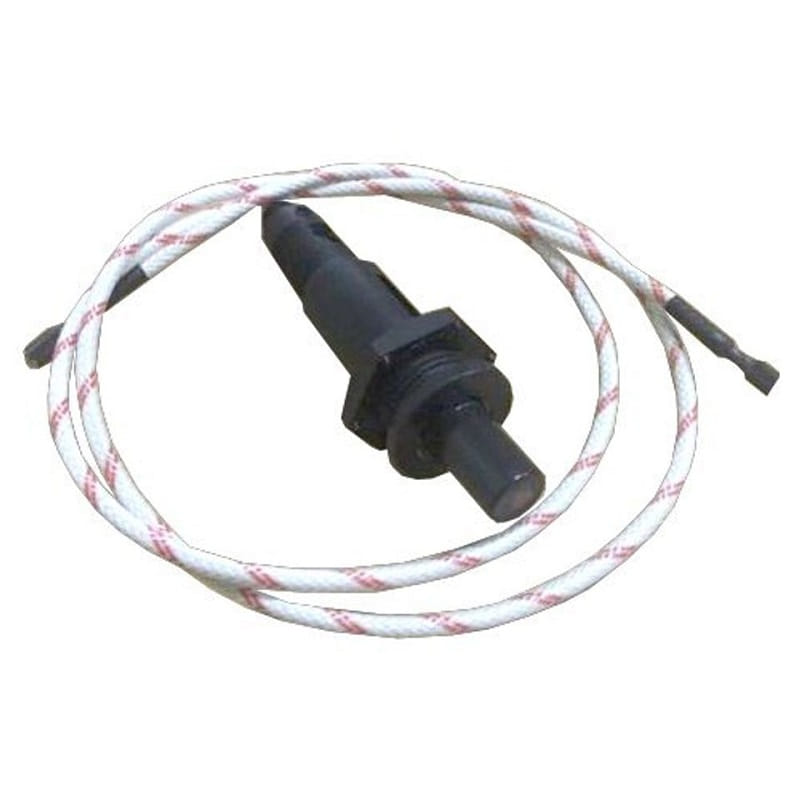If you’re the proud owner of a gas grill, you know it can be an excellent way to cook delicious meals for your family and friends. However, when the grill igniter not working, it can be a major inconvenience. Grill igniters are small but essential parts that allow you to start your grill quickly and easily. Unfortunately, they can sometimes become clogged or damaged, resulting in failure to ignite. Fortunately, there is some good news if your grill igniter isn’t working properly – some easy DIY fixes can help get it back up and running again. In this article, we’ll provide insights into why your grill igniter might not be working properly and how you can go about fixing it yourself.
Why Your Grill’s Igniter Might Not Be Working?

Hey there, fellow grill enthusiasts! Have you ever experienced the frustration of lighting up your grill, but your igniter isn’t working? Well, don’t worry because you’re not alone. There are a few possible reasons why your grill’s igniter might not be working, such as a bad spark, a dirty or wet igniter, or a faulty electronic ignition module.
Have You Checked The Battery?
One of the most common issues is related to the battery. If you have a battery-powered igniter, it’s important to ensure the battery is inserted correctly and has enough charge. If you have replaced the battery and it still doesn’t work, check the contact points of the battery holder for dirt or corrosion. The wiring may also be the culprit, so double-check to ensure the wires are correctly plugged in and not damaged. It’s also essential to clean the burner tubes and confirm that the igniter electrodes are correctly positioned. If you’ve tried all these tips and the igniter still doesn’t work, don’t hesitate to reach out for help.
Is The Ignition Button Malfunctioning?
The problem could be a bad spark, a dirty or wet igniter, or a faulty electronic ignition module. To troubleshoot, try lighting your grill manually with a lit match near a burner to rule out a gas-flow issue.
The Electrodes Are Dirty Or Corroded
One of the other most common reasons your grill may not be lighting up is due to dirty or corroded electrodes. This can happen when debris, such as food particles and grease, accumulate over time, preventing the igniter from sparking enough to light the grill.
The Gas Grill Low On Propane Gas
Your gas grill won’t light up even though you press the igniter button could be that your gas grill is low on propane gas. This often happens if you have used the grill for a while and have not replaced the propane tank. It’s easy to forget to check the levels of propane gas in the tank, and it’s frustrating when you are ready to grill only to find out that the propane tank is empty or low.
The Electrodes Or Wire Connections Are Loose
This can happen if your grill has been sitting unused for a while or if it has been moved around a lot. The electrodes are the little wires attached to the ignition wire, emitting the spark that ignites the gas. If these wires are loose, they might be unable to make a good connection and, therefore, won’t be able to ignite the gas. Similarly, if the wire connections are loose, the electricity won’t be able to flow properly from the battery to the electrodes.
Could There Be A Faulty Spark Plug?
There are several reasons why your grill igniter is not working, and one of those could be a faulty spark plug. The spark plug is a significant component of the igniter system that generates the electric charge to ignite the gas supplied by propane or natural gas. When there is a loose connection between the spark plug and the ignition wire or when the spark plug is corroded or dirty, the igniter may fail to generate the spark needed to start the grill.
Are The Burner Ports Clogged?
This impediment can obstruct fuel flow, preventing the gas from reaching the ignition source. Additionally, a malfunctioning igniter can be caused by corrosion or dirt on the igniter electrodes, no gas in the propane tank, misaligned burners, or dead batteries.
Could There Be A Faulty Control Valve?
Another possible culprit could be a faulty control valve, which controls the gas flow to the burners. If it’s not fully opened, gas won’t pass through to the ignition rod and, therefore, won’t create a spark.
Wet Weather
If it’s raining or humid outside, moisture can accumulate on the electrodes, preventing the spark from reaching the gas.
Read more:
- Brisket Stall Temp
- How To Season A Blackstone Griddle
- How Hot Does A Blackstone Griddle Get
- How To Clean An Electric Griddle
How to Fix Grill Igniter Not Working?

Checked The Battery?
The quickest way to check if a piezo igniter works is to determine whether you hear a loud snap when you press or turn the igniter. It may need replacing if you hear it, but no spark is still igniting your grill.
On the other hand, battery-powered gas grill igniters are easily replaceable. However, remember that the battery has a limited lifespan and will need to be replaced depending on how often you use your grill. Lastly, remember to check that your burners are clean and free of grease or grime and that the electrodes are adjusted correctly.
Don’t let a broken igniter ruin your grilling experience; with a few simple fixes, you’ll return to grilling in no time.
Ignition Button
To troubleshoot, try lighting your grill manually with a lit match near a burner to rule out a gas-flow issue. Then, check if your piezo igniter works by listening for a loud snap when you press or turn it. If it’s not sparking, it may need replacing.
For a battery-powered igniter, ensure the battery is inserted correctly and try replacing it or cleaning the holder contact points. Also, check the burners and electrode for dirt or grease buildup, and inspect the wiring. Remember, keeping your igniter clean and well-maintained is the key to ensuring your grill will start whenever you want to fire it up.
The Electrodes Are Dirty Or Corroded
To resolve this issue, the electrodes must be inspected and cleaned thoroughly. You can easily do this by disconnecting the gas supply first, then removing the cooking grate, flame tamer, and the igniter mounting screw to inspect the electrodes. If you notice any build-up, use a toothpick or a toothbrush with bleach-free cleaner to remove it. Once the dirt or rust is cleared away, dry the electrodes with a paper towel before testing again.
It’s important to note that if, after cleaning the electrodes, your grill still doesn’t light, it might be time to replace them and take your grill to a repair specialist. However, by keeping your grill clean and well-maintained, you can prevent electrode build-up and ensure your grill lights up effortlessly every time you use it.
The Gas Grill Low On Propane Gas
The best way to prevent this is by regularly checking the propane levels and having a spare tank on hand, just in case. It’s always better to be prepared for any situation. So, keep your propane tanks full, and happy grilling!
The Electrodes Or Wire Connections Are Loose
To fix this issue, ensure that all the wires are properly connected and that there are no loose connections. If there are frayed wires, you can fix them with electrical tape for a short-term fix, but it might be time to replace the whole ignition unit for a permanent solution. Always remember to turn off the gas before inspecting and repairing your grill.
A Faulty Spark Plug
It’s essential to clean the spark plug regularly using rubbing alcohol and checks for any signs of wear and tear. Maintaining your grill’s igniter system is crucial to ensure it performs well, allowing you to enjoy hassle-free grilling sessions. Don’t let a faulty igniter ruin your barbecue; take steps to keep it in top condition.
Are The Burner Ports Clogged?
The grill’s burners should be cleaned regularly to remove any debris or residue buildup that can cause this clog. Cleaning the burner ports involves removing the burner and using a wire brush or a specialized cleaning tool to clear the blockage. Properly maintaining and inspecting all grill components can help prevent ignition issues and ensure successful grilling experiences.
Could There Be A Faulty Control Valve?
It’s always important to double-check that your gas is turned on before attempting to press the igniter button. Additionally, cleaning the electrode and the burner tubes can help ensure that nothing obstructs the gas flow and causes a blockage.
Wet Weather
To remedy this, try wiping down the electrodes with a dry cloth or using a hair dryer on a low heat setting to dry them off. Additionally, ensure your grill is covered when not in use to prevent water from accumulating. These precautions allow you to keep your grill’s igniter working properly, even in damp conditions.
Tips To Help Ensure My Grill Igniter Works Properly

As someone who loves to grill, there’s nothing more frustrating than a faulty igniter. That’s why I’ve spent a lot of time researching and testing different methods to ensure my grill ignites properly every time. In this blog post, I’ll share my top tips with you.
- Clean the Igniter Regularly: To ensure your grill igniter works properly, clean it regularly. Igniters are often subjected to dirt, debris from cooking fumes, grease, and food particles, which can clog the components and stop them from functioning. Clean the burners and electrodes with a cotton swab and rubbing alcohol to ensure the igniter stays clean and performs well.
- Check the Battery or Power Source: Igniters require either a battery or power source to function, and if they are depleted or worn out, the igniter will not work. Check the battery of your igniter frequently and replace it if it is dead or corroded.
- Check the Electrodes For Damage: The ceramic tube that holds the metal end of the electrode can be damaged if there is corrosion or dirt build-up. If there is obvious dirt, clean it off with rubbing alcohol and a cotton swab. If there is corrosion, gently sand it off with sandpaper. Consider replacing the electrode or the entire ignition unit if the damage is beyond repair.
- Check Wires, Connections, and Circuitry: The components of an igniter must be interconnected and work perfectly if it’s going to work properly. Ensure the wires are not frayed or disconnected by switching off the gas connection, disconnecting the electrodes, and checking the wiring. If the connections are corroded or damaged, trim the damaged parts and use shrink tubing to reconnect them properly.
- Replace the Igniter When Necessary: Like any other component, igniters wear out and require replacement. If you have checked all the components and cleaned the debris, but the igniter still isn’t working, it is time to replace it with a new one. This will eliminate the stress and frustration of regularly dealing with a faulty igniter.
By following these tips, you can help ensure that your grill igniter works correctly, allowing you to light and cook on your grill without stress or worry and keep your barbecue season running smoothly.
How Often Should I Replace My Gas Grill Igniter?
Gas grills are a popular option for outdoor cooking enthusiasts. One crucial component of a gas grill is the igniter. Igniters, however, can wear out over time and through normal use. This raises the question, how often should you replace your gas grill igniter?
While there isn’t a set answer, replacing your igniter every three to five years is recommended. Of course, this depends on how frequently you use your grill, how well you maintain it, and how much wear and tear it endures. To extend the lifespan of your igniter, it’s essential to clean it regularly and not overload it with too much electricity. If you’re experiencing issues with your igniter, it may be time to replace it.
Before doing so, it’s important to ensure you’re purchasing the correct one for your grill model and brand. You can reference your user manual or do a model lookup online to find the appropriate replacement. Maintaining and replacing your igniter as needed ensures your gas grill remains in good working condition for many summer cookouts.
What Safety Precautions Should I Take When Replacing A Grill Igniter?
Safety precautions must be taken to prevent injuries and accidents when replacing a grill igniter.
- Turn off the gas supply: Before starting the replacement process, turn off the gas supply to your grill. This will prevent any gas leakage while working on the igniter.
- Allow the grill to cool down: Wait for some time for the grill to cool down before starting the replacement process. If you try to replace the igniter while the grill is still hot, it may cause burns and other hazards.
- Use proper tools: Use the proper tools for the replacement. This includes a flathead screwdriver, pliers, and a replacement igniter.
- Follow manufacturer’s instructions: Refer to the manufacturer’s instructions on how to replace the igniter. This will ensure that you follow the proper steps for your specific model of the grill.
- Wear protective gear: Wear protective gear such as gloves and safety glasses while handling the igniter and working on the grill.
- Check for gas leaks: After installing the new igniter, turn on the gas supply and check for gas leaks. This can be done by applying a soapy water solution to the gas lines and checking for bubbles. Turn off the gas supply and tighten the connections if gas leaks occur.
- Test the igniter: Test the new igniter to ensure it works properly before using the grill. This will prevent any potential issues when trying to light the grill.
- Keep a fire extinguisher nearby: It is always a good idea to have a fire extinguisher nearby in case of emergencies or accidents. Ensure the fire extinguisher is easily accessible and in good working condition.
- Dispose of the old igniter properly: Dispose of the old igniter properly. Consult with your local waste management facility on safely disposing of electronic components.
- Regular maintenance: To avoid future igniter issues, schedule regular maintenance and clean your grill regularly. This will prevent any buildup of dirt and debris that can affect the igniter’s performance.
Common Signs That Indicate My Gas Grill’s Igniter Needs To Be Replaced

How do you know when to replace your gas grill’s igniter? Well, the signs are clear-cut, and as someone who has experienced this problem first-hand, I’m here to share them with you.
- No Sparks: The most obvious sign that your gas grill’s igniter needs to be replaced is if there are no sparks when you try to ignite the grill. This could mean the igniter is damaged or worn out and must be replaced.
- Weak Sparks: Sometimes, the sparks produced by an old or worn-out igniter might be too weak to ignite the gas in your grill. This can be dangerous because the gas could build up and cause an explosion. If you notice weak sparks, it’s time to replace your igniter.
- Delayed Ignition: If there is a delay between when you press the igniter button and when the gas ignites, this could be a sign that your igniter needs to be replaced. Sometimes, this delay could be due to a dirty igniter, but it’s time for a replacement if the problem persists after cleaning.
- Intermittent Sparks: If the sparks produced by your igniter are intermittent or don’t always ignite the gas, it’s time for a replacement. This could be due to worn-out electrodes or damaged wiring requiring a new igniter to fix the problem.
- Corrosion or Damage: Over time, the electrodes and wiring on a gas grill’s igniter can become corroded or damaged due to exposure to heat and moisture. If you notice any signs of corrosion or damage, such as rust or frayed wires, it’s time to replace your igniter.
- Battery Life: If batteries power your gas grill’s igniter, keeping track of their life is important. If the battery runs out, the igniter won’t work, so replacing them regularly is essential to ensure your grill is always ready to use.
- Multiple Burners: If your gas grill has multiple burners, each should have its igniter. If one or more igniters aren’t working, lighting the grill properly can be difficult. In this case, replace any faulty igniters as soon as possible.
By watching for these common signs, you can avoid frustrating and potentially dangerous situations and ensure your gas grill is always ready for your next BBQ.
Conclusion
In conclusion, dealing with a grill igniter not working can be frustrating, but it’s not the end of the world. By understanding how your grill igniter works and knowing how to troubleshoot common issues, you can get your grill up and running again in no time. Whether you need to replace a dead battery or reconnect loose wires, the key is to stay calm and take your time. Happy grilling!
References:
- https://www.searspartsdirect.com/diy/symptom/gas-grill-repair/1235940/some-burners-won-t-light/grlga03
- https://www.bobvila.com/articles/gas-grill-wont-light/

Hey readers! Chip Holland here, and I’m a Manager of this website. My passion for writing about it only matches my passion for BBQ. Follow my blog for mouth-watering recipes, tips, and tricks for the perfect smoke, grill, and BBQ. I’m sure you won’t be disappointed!
